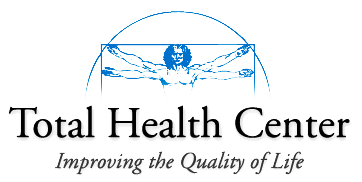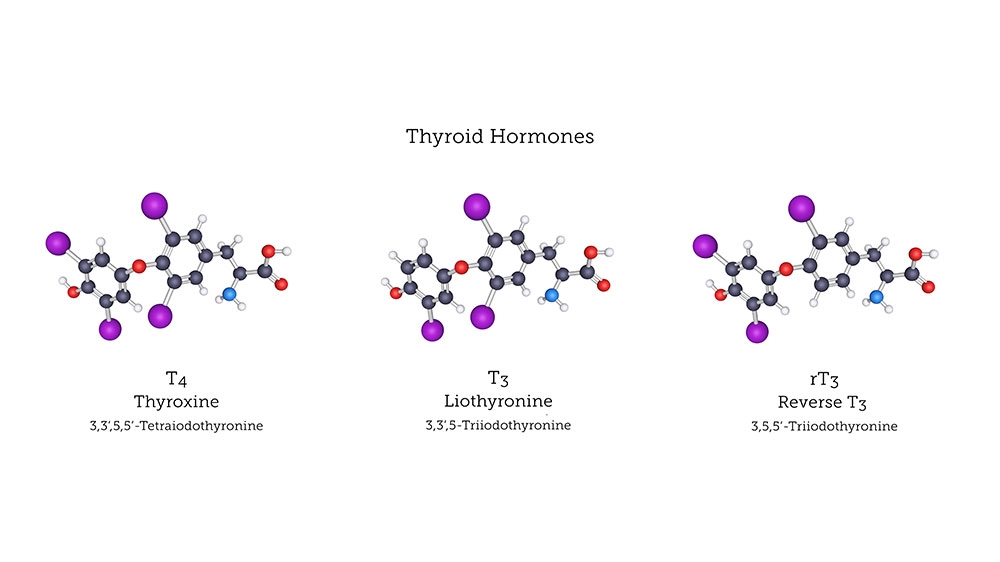Over 40 thyroid dysfunctions exist. The medical community divides these dysfunctions into 6 major patterns: 1) Primary hypothyroidism, 2) hypothyroid due to hypo pituitary, 3) thyroid under conversion, 4) thyroid over conversion, 5) thyroid binding globulin elevation, and 6) thyroid hormone resistance. This article focuses on the third – thyroid under conversion.
Thyroid Under Conversion
Normally, the thyroid gland converts iodine found in food into thyroid hormones. Thyroxine (T4) is the primary hormone made by the thyroid gland, but your body needs to transform it into triiodothyronine (T3) to use it. Some patient’s thyroid gland does not handle these conversions properly and effectively.
Multiple factors can cause under conversion in the thyroid, but a principal cause is the production of Reverse T3, instead of T3. Your body cannot use RT3, and RT3 does not revert to the usable form T3 either.
The Reverse T3 the thyroid produces basically wastes the T4 thyroid hormone. Since the hormones produced by the thyroid affect metabolic rate, they influence many parts of your body including your brain, heart, muscles, and liver. It’s not surprising that many patients with thyroid autoimmune disorders also have high levels of Reverse T3.
What Causes Thyroid Under Conversion?
Tests exist to identify when a person’s thyroid under converts T4, but functional medicine seeks the underlying cause.
Many factors can affect thyroid under conversion, but I have found stress plays a primary role in most patients. Stress comes in many forms, not just the obvious sources such as a demanding job or a strained relationship. Excessive dieting, food sensitivities, and allergies can all stress the body too.
Some patients have leaky gut syndrome which allows foreign substances to enter the bloodstream to stress the body. Other patient’s bodies feel the stress of exposure to heavy metals, pesticides, and food additives.
All forms of stress cause the adrenal glands to produce cortisol. Normally, stress dissipates and cortisol levels return to normal. However, constant high cortisol levels inhibit the conversion of T4 to T3, and increase the production of RT3.
How We Detect The Problem
A TSH blood test is the most commonly used tool to evaluate thyroid function and/or symptoms of a thyroid disorder. Thyroid stimulating hormone causes the thyroid gland to make T4 and T3. While this test may indicate there’s a problem, it doesn’t look at hormone balance.
Functional medicine strives for optimal hormone balance, so measuring other factors such as Reverse T3, total T3, T3 uptake, and T4 are also essential in the diagnosis and management of an underactive thyroid.
A Reverse T3 blood test in your thyroid panel determines whether you have high Reverse T3. Elevated RT3 levels may indicate additional problems, even when other values in the TSH may be within normal ranges.
How To Treat High Reverse T3
The conventional medical model usually treats thyroid problems with prescribed T4 to bring the thyroid stimulating hormone back to normal levels. Some practitioners look beyond the TSH blood test and when they see low T3 levels they prescribe more T3 instead.
Unfortunately, neither of these treatments used in the medical model address the various thyroid dysfunctions, let alone the 6 major patterns. However, functional medicine does.
Medical & Functional Models
The medical model focuses on naming the condition (diagnosis) and treating the condition with medications or surgery. Functional doctors want to know why a person’s thyroid behaves that way. We do not treat the symptoms, because they can have many causes.
For instance, I might have 7 patients with an autoimmune thyroid condition such as Grave’s syndrome or Hashimoto’s disease, but with 7 different causes. I mentioned stress is a major cause of reverse T3, but it can affect the body in various ways.
For instance, bacterial dysbiosis (imbalance) in the gut can prevent fat digestion and cause blood sugar problems. This causes liver problems, adrenal stress, excess cortisol, and increased RT3. Liver issues may also prevent the conversion of T4 to T3.
As you can see, it is important we look at more than just the results of the TSH blood test. Simply changing medication will not address the root cause of dysfunction. We cannot examine the interconnected systems within your body independently if we want to understand the root cause of dysfunction.
The medical model of care relies on specialists. One looks at the thyroid, another examines the endocrine system, and yet another looks at the digestive system. Unfortunately, specialization may blind us to what is happening throughout the body. Specialists focus on a single piece of the puzzle, but they may never see the complete picture.
Functional Model for Thyroid Disorders
If you have a thyroid condition it is important you look to the functional model for care, especially if you have a thyroid autoimmune disorder such as Hashimoto’s or Graves’. I believe the medical model works well for diagnosis and treating symptoms, but we also need to work with functional-based care to access the root cause and restore health.
I want to stress thyroid problems are nothing to play around with. If your doctor prescribed medication, don’t stop taking it just because you read this article. You will need to work with a trained functional medicine provider to address the underlying issues so they can help you restore thyroid function before reducing medication.
In some cases the thyroid may not regain full function, and you will need ongoing medication. Your functional and medical doctor can work as a team to restore your health. It needn’t be one or the other, but a powerful combination of the two instead.
Mark A. Scott, D.C., C.N.S., C.F.M.P.
Get more information on natural thyroid treatment or schedule a free consultation with Dr. Mark A. Scott of Total Health Care Virginia Beach.
The 7 Hidden Causes of Your Thyroid Problems
Estrogen, Cortisol, Dopamine, and more. Learn about the 7 hidden causes of your thyroid problems in this informative video series.








